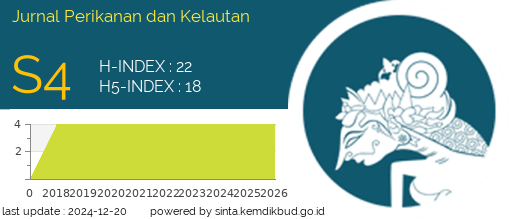Food Waste Potential as Alternative Feed Catfish Cultivation: an Overview
DOI:
https://doi.org/10.31258/Keywords:
Feed, Catfish Cultivation, Food WasteAbstract
Food waste in urban areas is an endless problem, considering that waste will
continue to exist. The technique of managing waste to become an alternative feed
for catfish is one of the steps to overcome the problem of waste and at the same
time becomes an alternative fish feed solution for fish cultivators. The purpose of
this research is to process food waste into fish feed. The method used in writing
this article is literature review. Based on the results of the literature review and the
author's analysis, it can be concluded that food ingredients that can be processed
into catfish feed are food waste by utilizing fermentation or by mixing or
formulated with other raw materials such as (fish meal, magot, tofu dregs, and
fine bran). The fermentation process can use fishery products sold in the market,
including (EM4, Boster, etc) which are mixed with molasses.
Downloads
References
[KKP] Kementerian Kelautan dan Perikanan. (2018). Refleksi 2018 dan Outlook 2019.
Anggraeni, D.N., & Rahmiati. (2016). Pemanfaatan Ampas Tahu Sebagai Pakan Ikan Lele (clarias batracus)
organic. Biogenesis Jurnal Ilmiah Biologi, 4(1):53-57.
Anis, M.Y., & Hariani, D. (2019). Pemberian Pakan Komersial dengan Penambahan EM4 (Efektif
Microorganisme) untuk Meningkatkan Laju Pertumbuhan lele (Clarias sp). Jurnal Riset Biologi dan
Aplikasinya. 1(1)
Junaida, I.S. (2017). Tingkat Konsumsi Ikan di Indonesia: Ironi di Negeri Bahari. Jurnal Penyuluhan Perikanan
dan Kelautan, 11(1):12-24.
Muntafiah, I. (2020). Analisis Pakan pada Budidaya Ikan Lele (Clarias sp) di Mranggen. Jurnal Riset Sains dan
Teknologi, 4(1): 35-39.
Selopes, M., Indrawati, E., Mulyani, S., Budi, S. (2020). Analisis Efektifitas Fermentasi Limbah Perut Ikan
Terhadap Pertumbuhan dan Sintasan Ikan Lele Clarias sp. J. of Aquac. Environment, 3(1): 1-5.
Wardani, R.E., Prayogo, M., & Agustono, M.K. (2017). Potensi Penambahan Azolla sp. dalam Formulasi Pakan
Pembedahan. Journal of Aquaculture and Fish Health, 6(2)
Widagdo, A.B., Elfitasari, T., & Basuki, F. (2016). Strategi Pengembangan Budidaya Pembesaran Ikan Lele
(Clarias sp) di Kecamatan Gunung Pati Kota Semarang. Prosiding Seminar Nasional Tahunan ke –V
Hasil-Hasil Penelitian Perikanan dan Kelautan (Juni):199-211
Windriani, U. (2017). Budidaya Ikan Lele Sistem Bioflok. Direktorat Produksi dan Usaha Budidaya.
Yanuar, A., Tyasari, F.G., & Dughita, P.A. (2018). Pemanfaatan Limbah Organik dari Rumah Makan Sebagai
Alternatif Pakan Ternak Ikan Budidaya. AGRONOMIKA, 13(1).
Yunaidi., Rahmanta, A.P., & Wibowo, A. (2019). Aplikasi pakan pelet buatan untuk peningkatan produktivitas
budidaya ikan air tawar di desa Jerukagung Srumbung Magelang. Jurnal Pemberdayaan, 3(1)







